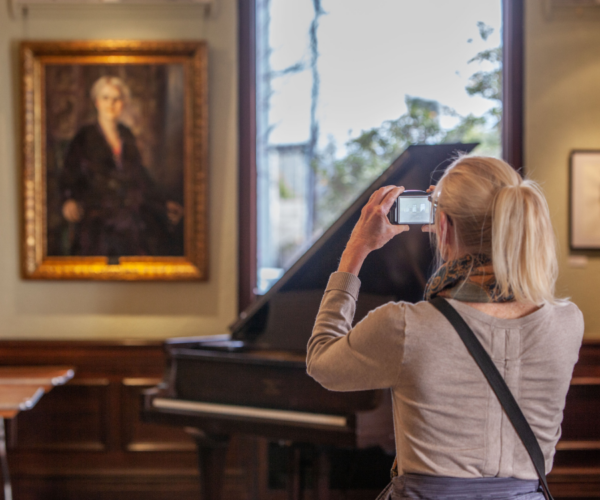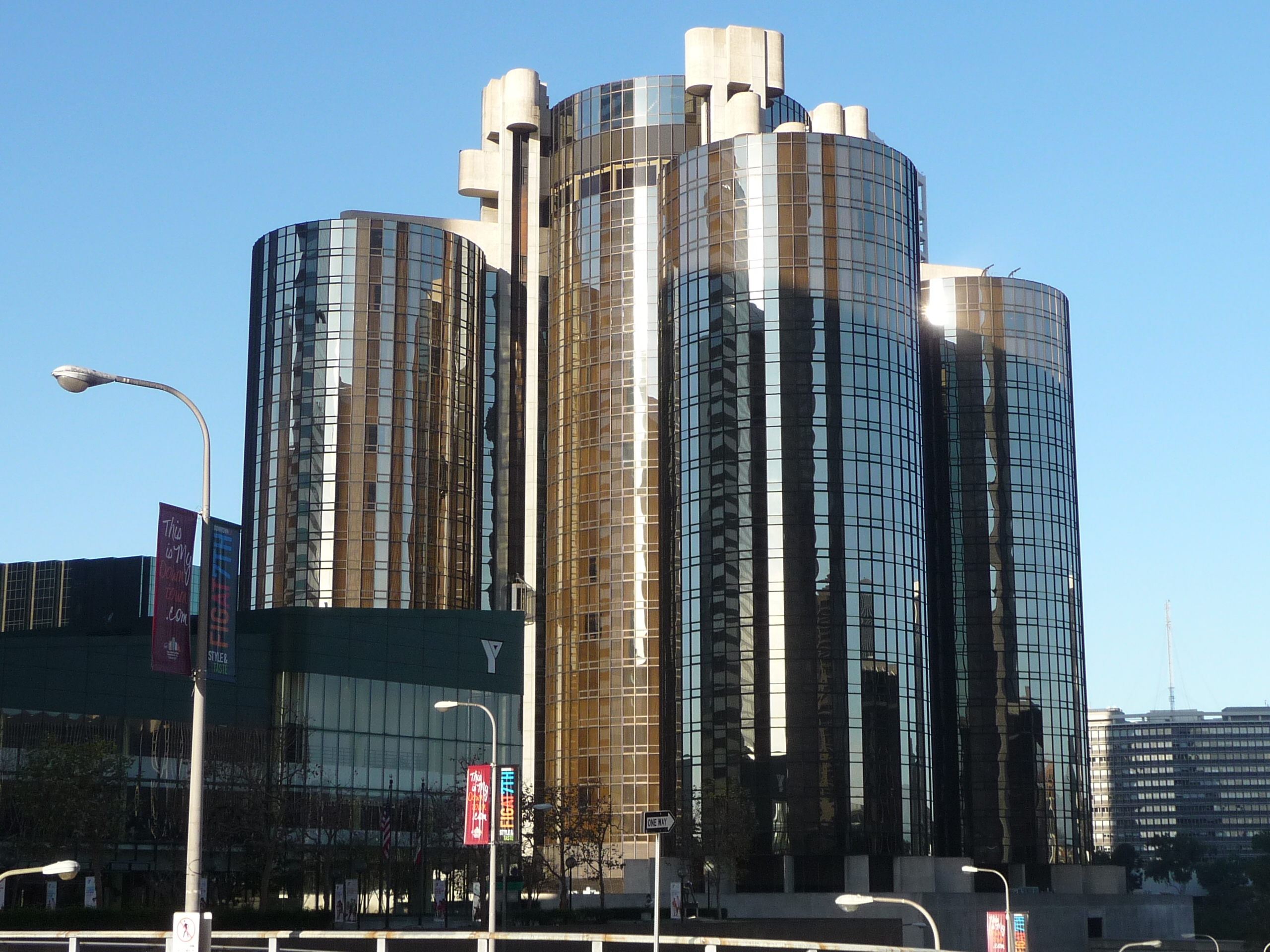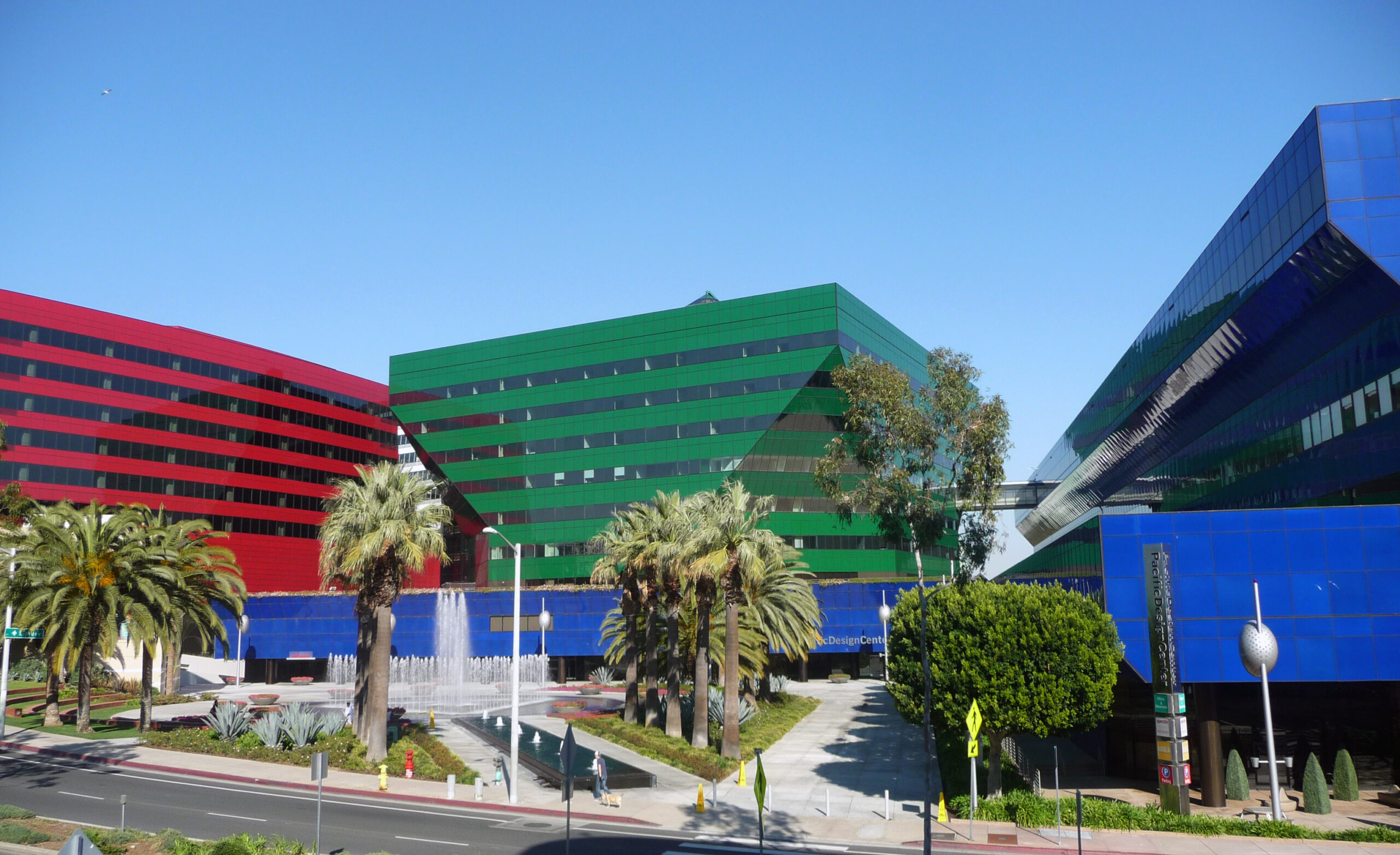Membership Matters
Article
Membership Spotlight: Daniel Paul
By Liz Leshin

Daniel Paul is an expert in L.A. Late-Modern architecture (1970-1990). Director of Development Liz Leshin asked Daniel to tell us about his area of expertise and why he joined the Conservancy.
Liz Leshin: Are you originally from Los Angeles?
Daniel Paul: The metropolis yes, the City, no; I’m from Anaheim.
LL: You joined the Conservancy in 1996. What made you join in the first place? What were the main issues of concern then?
DP: I immediately joined the Los Angeles Conservancy Modern Committee, which really felt progressive back then. We had a slew of preservation issues at-hand, primarily centered around different strains of Mid-Century Modernism, including a variety of vernacular resources that many others were not really noticing. It was exciting, like a home of sorts, to meet and be among so many others with similar loves.
LL: Why do you think it’s important to remain a member of the Conservancy?
DP: Because the Conservancy is virtually one-of-a-kind in terms of its scale and what it is willing to go after. Additionally, the Conservancy seems to have sort of a feel for, and ear of, local politics, making the organization helpful toward the cause.
LL: You are an expert in L.A. Late-Modern architecture (1970-1990). In a few words, can you express why this type of architecture is so compelling to you, and why L.A. was such a center for modernist architects?
DP: I became interested in this work beginning in 2001, when I was an Art History graduate student at California State University Northridge. I was curious to understand the aesthetic intentions and origin story of Late-Modern architecture, a design system perceived as anonymous if not hated. I had no idea when I began my work that it was created in Los Angeles.
I find the work compelling because it frequently possesses moments of beauty that are unexpected for its type, as large scale business architecture. Regarding why L.A. was such a center for Modernist architects, the deeper one looks I think every major city has its Modernist architects of note. But perhaps, at least for the US, a couple of elements set Los Angeles apart. Here, there was a certain openness to experiment and openness to what architect Cesar Pelli called “future-looking.” There was also a kind of horizontality in general back then: open space with no cultural hierarchies. This made for anonymity that was not all bad, allowing architects to easily explore new concepts, and Modernism’s zeitgeist was very much tied to the new.
LL: Please describe the difference between early Modernism and Late Modernism, and why Late Modernism arose as a reaction to early modernism. What do you think are some of the best examples of Late Modernist 1970s buildings in Los Angeles?
DP: If by “early Modernism” you mean any Modernism before Late- and Post-, there are numerous iterations of it. I can say that both Late Modernism and Postmodernism began around 1965 as different reactions to a Modernism perceived as increasingly orthodox, dull, and insensitive. Speaking in the most general terms, Postmodernism–though the movement was not named as such until the mid-1970s–reacted against Modernism by introducing elements such as contextualism, humor, ornament, Classicism, complexity, and meaning.
Late Modernism, on the other hand, reacts against Orthodox Modernism by taking the language of Modernism and exaggerating it to show what became an increasingly orthodox Modernism would no longer be blindly followed. So for example, the dematerialization and thinness of the Modernist curtain wall is exaggerated to become the all-over smooth glass skin. Los Angeles Late-Modernism added a healthy dose of regional high-tech and art influences. Both reactions employ irony in their own way, though in Late Modernism the irony is subtle and in early Postmodernism, the irony is overt.
Regarding favorites, that is actually a rather challenging question, since so much of Los Angeles was built out by 1965. But within the city limits, some of my favorites are the Bonaventure Hotel, the former CNA Park Place Tower on 6th and Commonwealth (now the Los Angeles Superior Court Tower), Anthony Lumsden’s twin sewage treatment plants: Donald C. Tillman Water Reclamation Plant (designed 1974; completed 1984) and Hyperion Water Reclamation Plant (designed 1985; completed 1997), along with some smaller resources too that are special in their own way: Auto Chek smog inspection facilities, and some of the 70s-era Bank of America branches, which I’m certain Cesar Pelli had an invisible hand in while he was at Gruen. Additionally, I have a weird place in my heart for the Warner Center: it looks like Oz from certain angles and used to be on the cover of the Yellow Pages!
LL: Where did your interest in historic preservation come from?
DP: When I was 21 and studying art history at California State University Fullerton, I became deeply interested in art by the self-taught, particularly as they created environments upon their property, often over a period of decades or more, not from a conscious place of being an “artist.” That such immersive creativity could be intrinsic and seemingly necessary to everyday life was deeply moving to me.
This led me to Grandma Prisbrey’s Bottle Village, by chance just a few days after the 1994 Northridge earthquake that caused it substantial damage. Not knowing what historic preservation was in the beginning, that is where I got started in preservation regardless, and I stayed at Bottle Village for 15 years. In the process, I fought for FEMA money, got Bottle Village listed on the National Register of Historic Places, and completed the USC historic preservation short course in 1996. But I must say that being on the Modern Committee in the late 1990s played no small part in my future career.
LL: Why is it important to preserve Modernist architecture?
DP: In Los Angeles that is equivalent to asking why is it important to preserve architecture at all. So much of our built fabric here is some version of Modernism. At this point, I don’t find it such a stretch to see that although Modernism is not decorative in any traditional manner, it can still be beautiful to people. So to preserve Modernism is to be open to non-traditional perspectives of beauty. There is, of course, everything that Modernism stood for, and that is a mixed bag. Nonetheless, I don’t blame the aesthetic itself.
LL: As you know, in 2020, the Conservancy is exploring the 1970s turning 50. One of your specialties is glass skin buildings, which started to be built in the 1970s. What is the allure of glass skin buildings?
DP: That they were never intended to be high art objects, but they nonetheless possess moments of great beauty.
LL: What is the challenge in preserving them?
DP: Their scale, the value of their land, preserving the very few and subtle character-defining features that they possess, and changing tastes. Taste goes in cycles. There was a time when Victorian architecture, Mid-Century Modernism, Art Deco, or any other variety of design systems fell out of favor, and works were then altered or demolished. Once these movements return to vogue, they never fully fall out of favor again. The challenge is identifying Late-Modernism’s notable examples, then leaving them alone long enough to where they intrinsically over time look good again – and are therefore marketable – on their own accord. Late-Modern aesthetics are on the cusp of this, but right now innumerous mirror glass buildings are for lease.
LL: What do you say to people who describe them as “ugly” or “soulless”?
DP: First, I would remind them that when the Modern Committee began in 1984 as the Fifties Task Force, the 1950s were only 25 years old. That would be the equivalent to staring an early ‘90s task force now, and yet the ‘70s work is twenty years older than even that.
Regarding the buildings, I say enjoy their bold, sculptural presence from afar, and enjoy their surfaces close-in. Try and see the building as it is, separate from the corporations or business practices that the design system has come to represent. Understand that the original aesthetic intentions were not that. And just because they are large-scale projects, know their design work was often done on minuscule time and budget allocations, by architects trying to do something very interesting with very little. Their features are subtle, a fact which is easy to miss on account of the buildings’ often large scale.
LL: How will preserving buildings from the 1970s inform future generations?
DP: In 2014 I gave an all-day driving tour of mirror glass office park architecture in Orange County, and by and large most of those on that tour were under 30. This look already speaks to a certain young group, perhaps as their nostalgia for a past future.
LL: What do you think are the biggest issues or challenges facing preservation in Los Angeles moving forward?
DP: Preservationists need to be discerning about what they fight for, but at the same time, neither the need for housing of various types, nor whatever whims developers have should run rampant over preservation. Courage, communication, and vision are in order.
Our members love L.A.!
Learn more about some of Daniel's favorite places in L.A. County!
Join the L.A. Conservancy!
Become a member today and help preserve L.A. County's architectural and cultural heritage.



